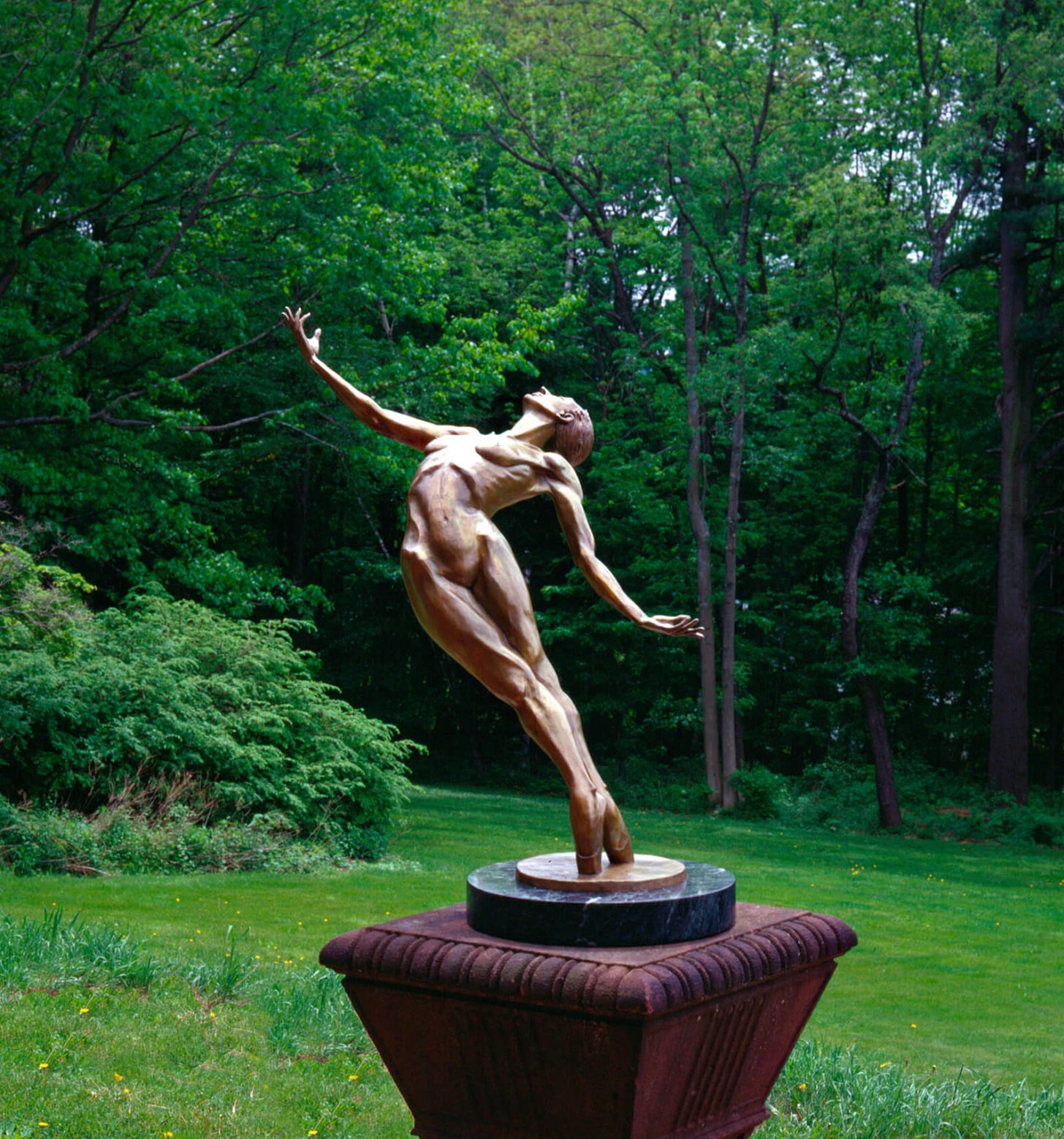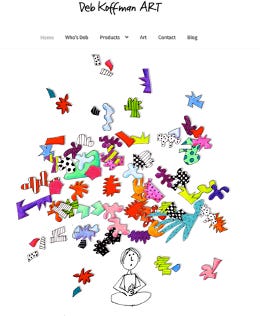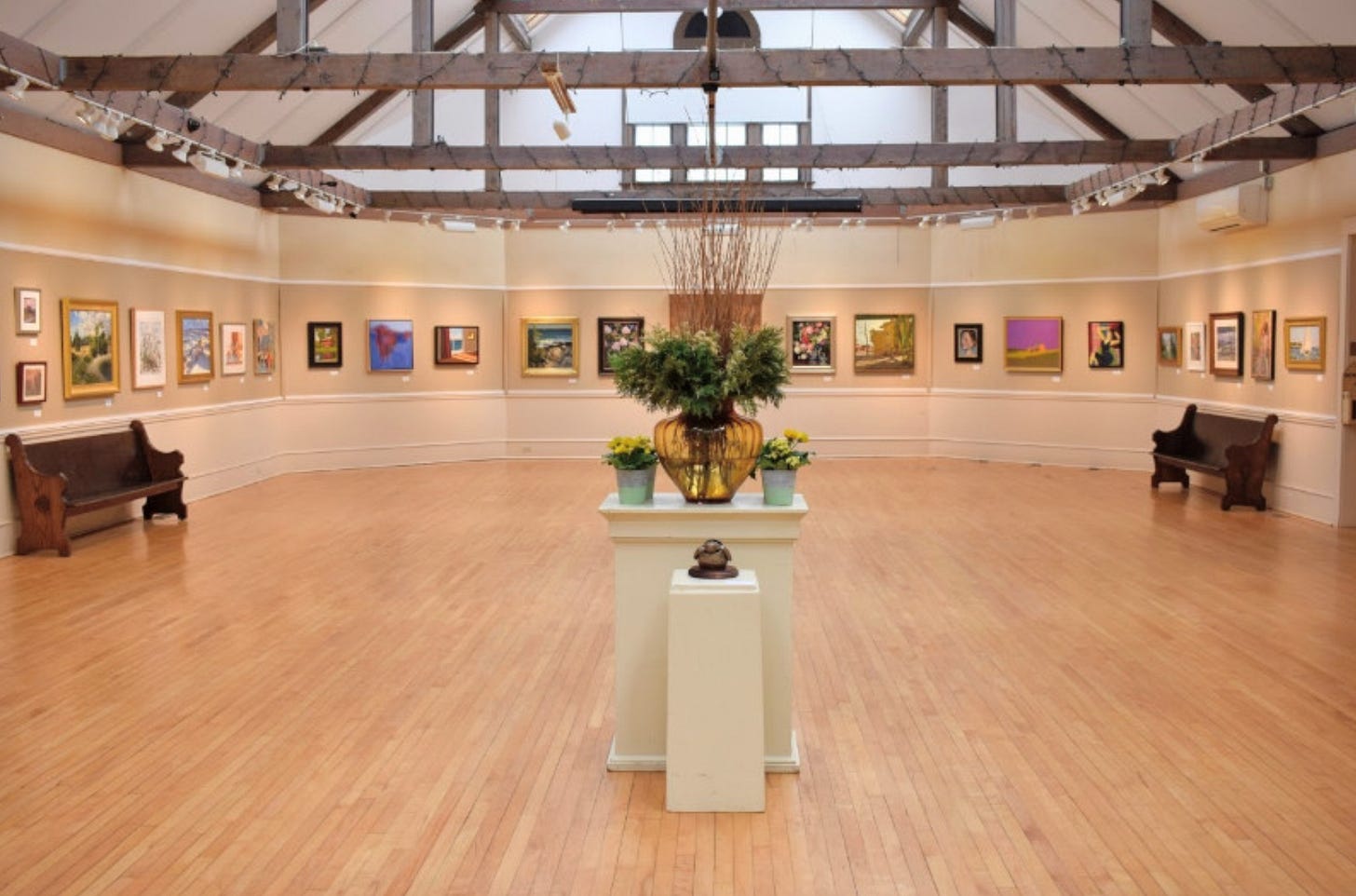Reflections in an Art Gallery Window
The Ocean Border Series Part I
Standing in Doorways (SID) is a newsletter dedicated to essays and stories of lingering in those spaces on the margins and along the edges, where decisions build character and challenge notions of access and separation. You can read more about SID here. Subscribe below to follow! Thank you!
This post is Part I of a four-part series instigated by the ocean border, the catalyst for contemplating authenticity. You can read the introduction to this post here.
In thinking of authenticity, I am often reminded of T.S. Eliot’s “Tradition and the Individual Talent.” The sentiment of learning from, and adding to, a historiography of literature is critical to generating the quality of artistry necessary to advance the form and content in his contemporaneous epoch. While I do not necessarily subscribe to Eliot’s perspective, his warnings and charges to the modernist poet of the early 20th century were clear and relevant to any art form1: become educated, cautious, and discriminate; current popularity is not the equivalent of good; and realize original does not mean wholly unique and separate from the past.
[the poet] can neither take the past as a lump, an indiscriminate bolus, nor can he form himself wholly on one or two private admirations, nor can he form himself wholly upon one preferred period.…The poet must be very conscious of the main current, which does not at all flow invariably through the most distinguished reputations. He must be quite aware of the obvious fact that art never improves, but that the material of art is never quite the same.
While Eliot’s message is relevant to my exploration, this is not an essay on talent. This is a contemplation of my own inadequacies and censorships, of the regarding of a unique voice and vision, of my own judgments against art and markets. It takes the form of story and story fragments, from the perspective of a voyeur gazing into the room.
O O O O that Shakespeherian Rag
The first time I attended a gallery opening as journalist I experience a patronizing feeling masquerading as importance. It accompanied me as I walked towards the old stone church like a meek disfigured shadow. It juxtaposed the swagger of the long strides, the crinkled corner of the mouth, the protruding lower lip, and the puffed chest. Nude bronze figures on the lawn were outstretched on their bases, muscles and bones patina to a dark burnish. Their extended fingers touching the cool spray of a laughing summer mist as it skips across the evening.

It was nearing the end of July and a fickle sweat had already soaked through the button-down beneath my blazer. I stashed my complimentary ticket proudly within my breast pocket and gripped a small wide-ruled, spiral bound notebook in my hand, leaving a dusting of torn paper flakes behind me.
“Hey Brian! The Artful Mind. Great to see you, again!”2
Her gaze shifted to the clipboard as she brushed away a random blue streak in her blonde hair and checked a box next to my name. I don’t remember her name only her eyes: one blue, one green. She was a picture of distinguished retail, not necessarily exclusive, but certainly not what I would have called mainstream.
“Yes. Brian. Hi.”
Sure, not every pick-up line is this smooth. It was possibly that the copious amounts of cannabis I inhaled prior to arrival or the site of free-flowing wine distracted me from suave and substantive repartee.
As I handed her my ticket I said, “Is Nina here yet?”
Nina was the photographer and of course she was there. I was 45 minutes late having already missed the curator’s introduction and the artists’ brief, humble, and profound introduction to the complexities and inspirations for their work.
“Of course,” she said. Of course.
“Why not head inside and visit with the artists and guests, grab a glass of chardonnay on the way past the front tables. Snacks are set up towards the back and they said they can’t wait to talk to you.”
The old solid cherry door with thick iron hinges had been refinished for the event, a massive undertaking to restore the nearly 400-pound arched behemoth. The building, a former Episcopal theatre of God, had recently been converted into arts center, a performance venue, and, for the purpose that evening, a gallery for a multi-artist show opening. I thought, sincerely, how original the repurposing of the ubiquitous house of worship for Jesus to the worship of the authentic creative spark.3
In the face of my own inadequacy, as a creative, as a man, I stood outside, unprepared and overwhelmed as a writer, a soon to be new father, and increasingly an outsider in my friend group. I stared into the void at the entry, no longer armed with the status of my complimentary ticket4. I felt the ground softening beneath my feet, my shoulders slouching. I was visibly shrinking, a darkish green hue forming over my summer tan. I was slowly becoming a sculpture in the forecourt.
I asked myself: Did they know I was a fraud, just a carpenter posing as a writer, working for a monthly artzine for free wine and snacks. Six months earlier I concluded a year as a sports editor and feature writer for a weekly newspaper. During that time I was trying to establish credibility with my own creative work. Now, I was working for the magazine to sustain some continuity and remain engaged with my art community and the craft.
“You look great tonight by the way,” she said, pinning her hair behind one ear.
I did look great. In my lust for creative and personal authenticity, I had gravitated towards the casual New York City attire that littered cultural landscape of the burgeoning internet, of Poets & Writers magazine, of the advertisements I saw for Shakespeare and Co., of the gallery photos, and of the artists representing a trendy hipster culture in the early 20-oughts that would peak with the arrival of Mumford and Sons and die away by the fourth season of the once prime-time sitcom “Community.”
I never responded to her. That was me at twenty-one. Incapable of anything more, and constantly feeling less than, seeking validation for my effort everywhere but within, more of caricature—or a character if I was being generous—than I would have liked. It was also the year I met studio owner Deb Koffman in Housatonic, Massachusetts, while working as a builder on her home.
Koffman experienced the world on her own terms, through the lens of expressive compassion and empathy. She brought a sense of joy-filled indulgence to her canvas, be it collage, wood, cardboard, books, or actual canvas. On my birthday in 2002, she gave me a copy of Natalie Goldberg’s, Writing Down the Bones (1986). During lunch break, I would sit in a collapsible chair at the edge of the project site overlooking a small valley and the Housatonic River, reading sections of the book, and writing scribbles of poetry and prose that infused my daily life with meaning and propositioned me for more.
Because of Koffman—because of Deb—I became a writing carpenter. I was stoned regularly (I admit it) and challenged greatly by the realities of being a father to a little boy, just five months before America changed with 9/11. As a writing carpenter, I found my expression and solace crafting words at the bar. Often it was the high-end venues with luxury furnishings and crowds with sports coats and fancy corporate titles. Sometimes I stopped at a rundown strip club fixed in the middle of a cornfield in a remote town in the Pioneer Valley: Castaways, a fitting name for a zoo, for all of us there. I rejected and indulged in the atmosphere of sex and exploitation with the credulous optimism of American individualism, of being self-made and self-employed. Oblivious and intoxicated I wrote little poems on borrowed pieces of note paper from the waitresses. This was my authentic experience, a way of sequestering my creative expression in between work, sleep, parenting, and journalism.
While that time in my life was driven by the myriad forms of fear and self-deprecation that psychologist and therapist appreciate—and Wittgenstein would tip his hat towards—today I see how the exogenous elements of advertising, education, and masculine culture influenced my development as a young man and creative. There is a difficulty in the modern era in trying to wrest an independent identity from a standard communal upbringing in rural America. For me, it resulted in conforming to a preconceived notion manhood and what the artist looks like, and they were not homogenous. I wanted to sculpt my life into a salable good, to be purchased, placed on a shelf, and flipped through occasionally, but I didn’t have the tools.
Today, I think of Toni Morrison’s Jazz (1992), realizing that seeking “that longed for authenticity, for a right to be in this place, effortlessly without needing to acquire a false face, a laughless grin, a talking posture” (159), is how one grows towards originality. I am also reminded of Goldberg’s words: “you will eventually have a deep security when you begin to do what you want. How many of us with our big salaries are actually secure anyway”(Bones 2). How true this is for a writing consultant.
April is the Cruellest Month
If you can believe me, I was thinking of all that, those old moments, as I made my ways towards the galleries on Main Street in Rockport twenty years later, listening to the din of the sidewalk pedestrians scrambling between the leashed dogs, the dining tables, the plasticized prints, and the advertising boards. Aged patrons shuffle along in brightly colored polo shirts and floral-print, full-length dresses that hide the beauty of freckled, dimpled, and spotted legs, stained with lines of deep blue.
No longer a struggling journalist and unencumbered by the sweet whiskey smell that was embroidered on my countenance at twenty-two, I find an aperture along this street in which to view the space between the commerce and the spontaneity and the creativity. I am able to compartmentalize today, segregate the noise and traffic of the art market from the languishing rigor of artistic creativity in a way I couldn’t as an ignorant young man. I hear the ocean waves crash against the concrete building foundations, smothering the large boulders along the seawall that prevent erosion of soil and keep the canvases and alabaster sculptures from dissolving into the Atlantic during the tech era, and appreciate the diligence and fortitude required to persevere, to thrive and to survive.
I still experience the old insecurities. It shows in my forced lean against the faded and rusted US post box, absorbing the sting of hot metal against my bare skin. I feel a type of alchemy at work taking my malleable flesh and bone and folding it into an object like a fixture, or a statue. The only shade I see exists beneath a sparsely branched maple, tiny in stature, pretending to blend into the concrete and asphalt of the walkways as it loiters outside the First Congregational Church.
Standing at a distance I peer into the gallery. A well-dressed tall woman in heels looms over a small desk near the middle of the room. It’s densely packed with brilliant oil and acrylic works, bordered with sleek ornate gold tinted frames. The space looks congested with all the bodies. It’s open to the public now with a table of wine and cheese for anyone entering. This forum is about money. The aesthetic is capital. There is no artist in the room giving a hyped up speech.
I am aware of my transient status on the margins: not a local and barely a tourist, not even an artist or a journalist, a passerby of sorts feeding off the vibe. For me, there is the embittered old feeling of fraud growing, transforming into a resentment about class and culture in a way I still don’t understand.
In the reflection in the window, I see my face contorting into a sneer as I become critical of the sign that says “Local.” Local? The paintings lack the texture of local, of Rockport with its jagged sharp contours that frame the town with its broken sidewalks and struggling cracked, glued, and reinforced colonial era buildings, all groaning against the winds and bracing to keep from toppling into the sea and out of memory. I whisper, “art is economics in this place.” I wonder, can we only find the authentic in poverty?
Down on Bearskin Neck, the summer humidity turns concrete floors and cracked plaster walls into saunas. Even the usually cool atmosphere fostered by the ocean breeze is unable to survive. These works are watercolors and still life paintings, dark baroque techniques, dyed and printed tee-shirts, knitted dolls and kitsch resembling boats, gulls, and the white capped waves intentionally mimicking Winslow Homer. For me, these are the spaces I prefer to visit, where brush strokes clash into the trajectory of the ocean tide and gobs of pastel paints accentuate the bow and the sheets and old un-leafed trees sink into the shore. It may also be that the price tags here are something i can afford, but I digress, and remember that the authentic isn’t experiencing the mundane atypically, and it isn’t a rejection of a trend or the marketable.
The suns rays glimmer off the robust parking meter and for a moment I’m distracted from my contentious fight with the economics of creativity long enough to see a pigeon strutting along the sidewalk picking at the loose breadcrumbs and cigarette butts, its head bobbing forward, and its grey and purple body glittering, beneath the bins of loose prints.
Digging through the prints, I see beautiful contradictions. A giclee of a lean man, standing in a powdered wig aboard a sailing ship. The look on his face suggests he is out of place. The artists focused on the large mole against the porcelain white skin of his cheeks vibrant against the dark clouds, the black ocean, and faltering vessel. I flip the board and I am drawn towards the rippling stretch marks shimmering along the slick and sparsely haired, brown belly of a half-naked woman breastfeeding on a disheveled blanket in the sand, the aqua surf reaching towards her feet. Maybe they are just a pair of overused tropes of privilege and labor, of mortality, of the disfiguring beauty and joy and longing of womanhood; or maybe some vague interpretation of the agency of a mole and the expression of the predatory nature of men through the metaphor of the ocean seeking its sexual desire without consent; or maybe the poignant reflection on the middle passage of the slave trade, the stalwart determination of lost souls reaching forward to embrace and encourage future generations. Regardless, each image has a space in the rack, or in a frame on the wall, or it’s packaged and ready for shipping in the back.
These are thoughts that cross my mind as I stand outside flipping through the stacks— more, there is always more, in the back, in storage in the attic and the basement, more. At the edge of the sidewalk, I can smell the strong salt air of the sea and I listen to the gulls’ chatter in conversation, aping us patrons.
For ease of the reader, I utilized the Poetry Foundations website to provide this excerpt. According to the website, “‘Tradition and the Individual Talent’ was first published in 1919 and soon after included in The Sacred Wood: Essays on Poetry and Criticism (1920).” I read this first as a grad student, and have contemplated my responsibilities as a creative ever since. The pathway is: https://www.poetryfoundation.org/articles/69400/tradition-and-the-individual-talent.
"The Artful Mind” is a monthly artzine that covers local artists in the Berkshires, Hudson, and sometimes NYC. I worked as a feature writer in 2001 and 2002. The magazine is still published in print by Harryet Candee and is available online. Artful Mind Feb 2024
In 2024, the acquisition of a church for artistic performance seems like a replica, a piece of post-post modern simulacra, like DeLillo’s The Most Photographed Barn in America in White Noise (1985), Murray telling Jack, “We’re not here to capture, we’re here to maintain one….Can you feel it, Jack? An accumulation of nameless energies” (12). I can feel it.
It should be noted that the ticket was nothing more than an invitation at the request of the organizer. The event, the snacks, and the wine were all free.




Thanks Nathan, I always appreciate your reading and the positive feedback. I may have spent too much time writing and rewriting this one, the first draft was not pretty, but at some point in the process it seemed to open up for me which was positive because I had already committed to the four post series. At one point, i even considered editing the introductory post to to the series so I wouldnt have to write it 😂 but all is well that ends well....i think.
So many exquisite details, Brian. And it takes a completely unique shape. Excited to be on this newsletter!